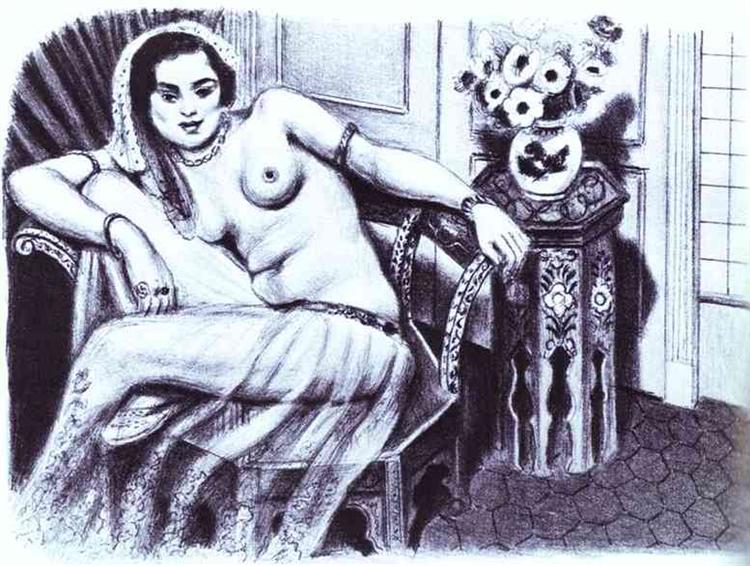Description
The painting "Odalisque in a Gauze Skirt" by Henri Matisse, created in 1929, stands as an epitome of the exploration of color and form that characterizes the mature style of the celebrated French painter. This work, with dimensions of 75x57 cm, captures the essence of an odalisque, a recurring figure in Matisse's artistic production, evoking an orientalist sensuality rooted in the romantic exoticism of the 19th century.
At first glance, what impacts is the bold use of color. Matisse masters a vibrant and daring palette, filled with intense blues, deep reds, and warm yellows. These colors are not merely applied to represent reality as it is but seek to translate a deeper and more subjective sensory experience. The skin of the odalisque, with pale yet warm tones, contrasts wonderfully with the fabrics and backgrounds full of diverse patterns and textures. This juxtaposition of colors creates a visual dynamism that injects life into the composition.
The central figure, the odalisque, is arranged in a relaxed and carefree manner, almost oblivious to the observer's gaze. Her posture, with one arm resting on her head and the other loosely fallen, communicates a sense of languor and repose. The gauze skirt she wears adds a touch of delicate transparency that emphasizes the ethereal sensuality of the scene. The details of the clothing and ornaments, meticulously represented, suggest an oriental influence that articulates the exotic context Matisse so often explored.
The background of the work is not merely decorative but plays a crucial role in the construction of the pictorial space. The geometric and floral patterns that compose it reaffirm the artist's taste for the ornamental and decorative, distinctive features of his style. These elements not only create depth and complexity in the composition but also contrast with the softness and simplicity of the odalisque's corporeal forms, establishing a harmonious dialogue between figure and background.
In "Odalisque in a Gauze Skirt," Matisse demonstrates his masterful ability to create balanced compositions rich in visual texture, never losing sensitivity to the human figure. The work echoes his perennial fascination with harem life and odalisques, themes he explored extensively throughout his career, especially during the 1920s. This period was particularly fruitful for Matisse, who devoted himself to creating images full of color and vitality, often inspired by his travels and the meticulous study of Islamic and Mediterranean culture.
Matisse's odalisque is not just a static figure; through her representation, the artist manages to capture an atmosphere, a sense of time stopped that invites the viewer to immerse themselves in the scene. The painting, therefore, is not just an image but an immersive experience that communicates Matisse's aesthetic sensitivity and personal vision. The apparent simplicity of the forms deceives the observer, revealing, upon closer scrutiny, an intricate elaboration of rhythms and balance that underscores the artist's technical mastery.
In summary, "Odalisque in a Gauze Skirt" is a work that encapsulates the essence of Matisse's style: a fusion of color, form, and sensation. It is a testament to his ability to transform reality into a world full of beauty and harmony, where each element contributes to a visual orchestra of perfectly measured proportions. In this painting, Matisse not only presents us with an odalisque but also a poetic and sensual vision of the world, as he perceived it.

